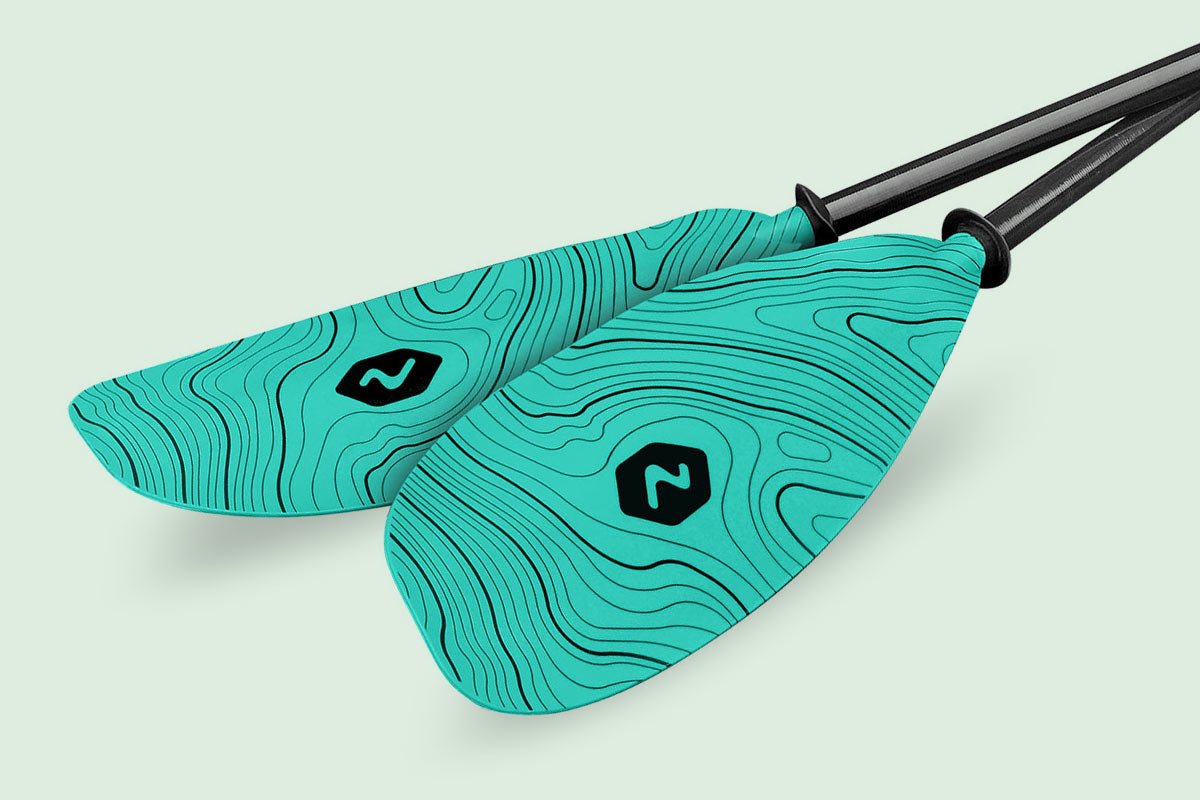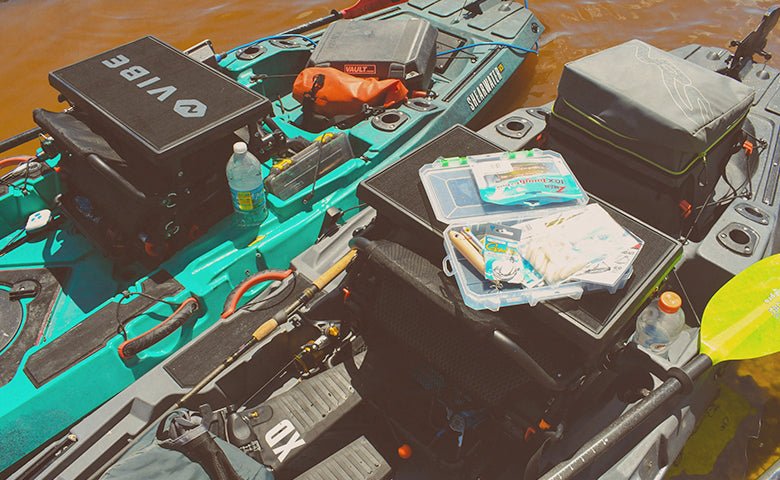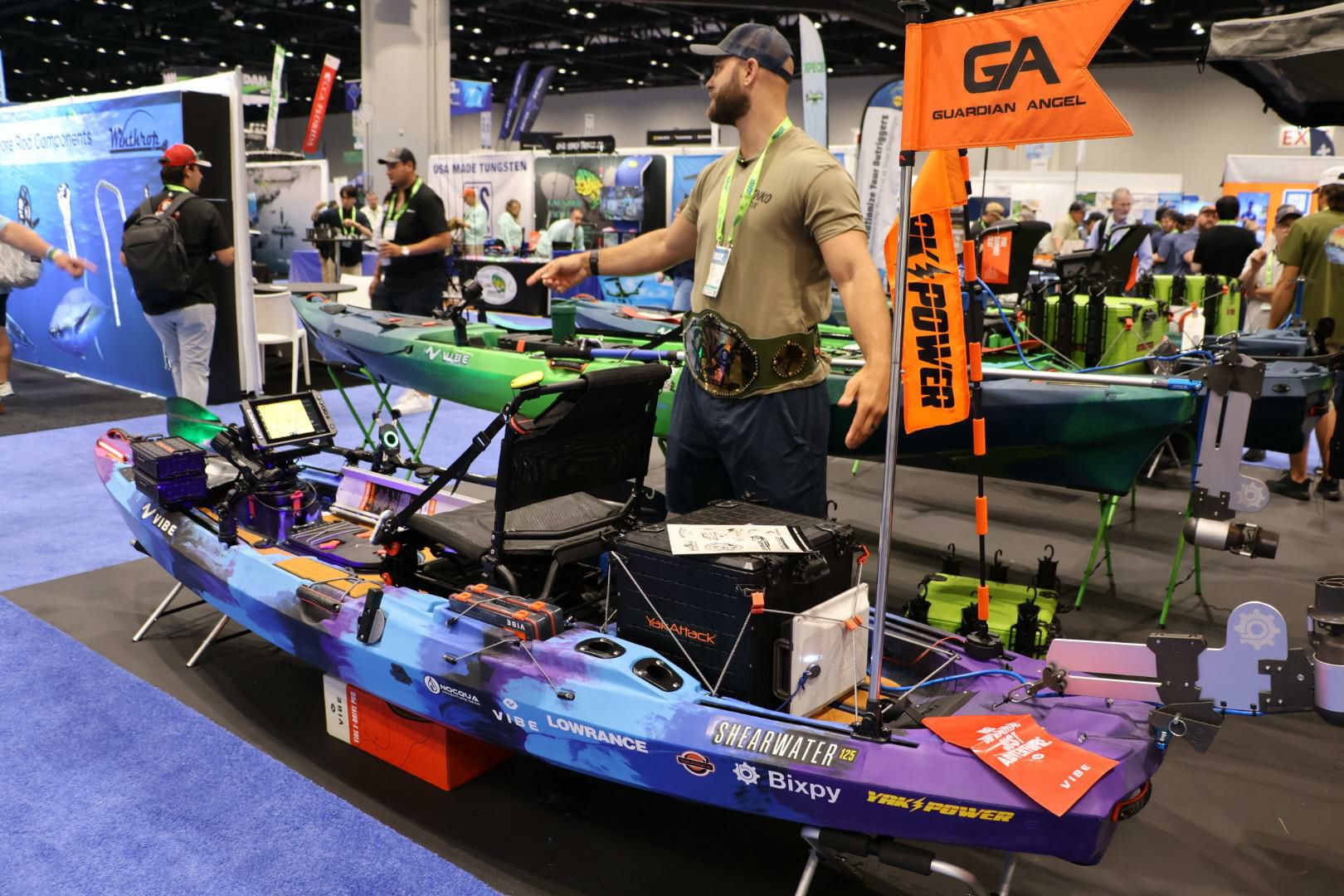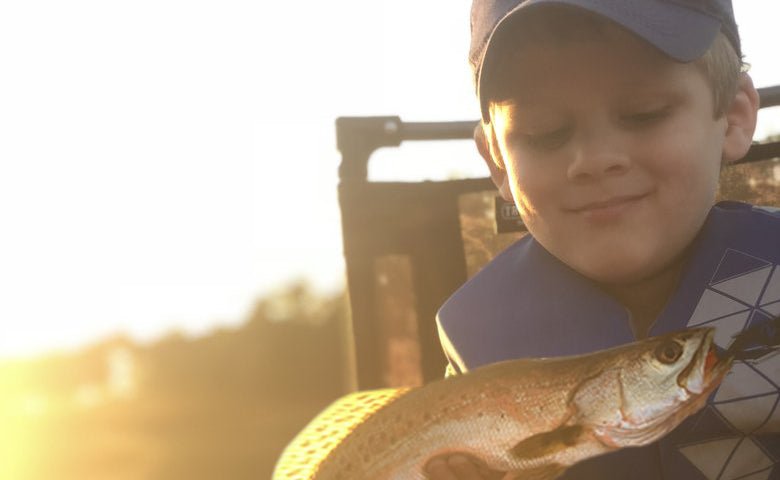How to Choose a Kayak Paddle

After the fishing kayak itself, your choice of paddle will have the biggest impact on your performance on the water, as well as your enjoyment. Even a short paddle to your favorite fishing spot will involve lots of paddle strokes, so owning a well designed paddle that will make the most of each stroke can make all the difference.
To choose a fishing kayak paddle, you need to consider four basic things:
Length: Your kayak width and your height determine your paddle length.
Materials and price: Lightweight materials (like carbon fiber) improve performance and speed, but will add to a paddle’s price and impact your budget.
Blade choice: A paddle’s blade shape and size will affect its overall efficiency in the water – which can also make it not only easier for you to paddle, but also how fast your kayak will be propelled. Note, "feathered shaped" blades can also improve a paddle’s effectiveness in the water.
Shaft choice: Most paddle shafts are straight, but a "bent" shaft design can make it easier to paddle. This is sort of like how it's easier to shovel dirt or snow with the bent shaft of a shovel than a straight shaft.
Paddle Length: Picking between different lengths of paddle (paddle sizes) is very straightforward it does depend on the width or your fishing kayak, and your height.
The very best option – as you'll read below – for deciding on paddle length is to get an adjustable paddle that is perfect for any height person, and for any width kayak. A perfect choice is the Vibe Evolve Paddle 230-250cm
The wider your fishing kayak is, the longer your paddle needs to be. Taller paddlers will also need longer paddles. Paddles are sized in centimeters, even though kayaks are measured in inches. Paddle sizes generally run from 210 cm to 250 cm.
For someone between under-5-feet-tall and 5'6", you'll want a paddle length of 215cm for a narrow kayak about 23" wide, up to a length of about 230cm for a wide kayak 28" or wider. Someone between 5'8" and over 6' tall will want a paddle length between 220cm for a narrow kayak, up to 250cm for a very wide kayak.
Blade Materials: Plastic, Fiberglass or Carbon Fiber
Saving weight raises both performance and price for both kayak paddle blade materials and kayak paddle shaft materials. A lighter blade will reduce paddling fatigue because you raise your blade higher than your shaft. Different kayak paddle blade materials also differ in how well the blades transfer energy to your paddle stroke.
Plastic or Nylon Blades: Plastic is often chosen by recreational paddlers because it's cheap, but plastic can crack and its quality degrades when left in the sun. Plastic also flexes in the water more than fiberglass or carbon fiber, and that flexibility makes your paddle strokes less effective and you will tire out faster.
Vibe's Journey Paddle is very budget-friendly, made with a strong polypropylene plastic blade and aluminum shaft, and is perfect for beginners.
Fiberglass Blades: In the middle of the price and budget range is fiberglass fishing kayak paddles which offer excellent performance and durability. Rigid fiberglass kayak paddle blades are more efficient in the water than plastic blades.
The adjustable length fiberglass Vibe Evolve Paddle 230-250cm is truly an excellent option for veteran anglers and paddlers and will deliver fast power for any adventure.
Carbon-Fiber Blades: The most expensive fishing kayak paddles are made from carbon fiber, but they offer the best paddling performance, are ultralight, and deliver excellent energy transfer with each stroke, so you are able to go faster and for longer distances without tiring.
Ember Carbon Fiber Paddle (240-260cm adjustable) fishing kayak paddle is adjustable, super light weight and strong. Made by pro anglers for pro anglers.
Shaft Materials: Aluminum, Fiberglass or Carbon Fiber
Aluminum Shafts: Plastic shafts are rare. Aluminum, the most budget-friendly shaft material, is durable and fairly light. There are lot of options available for aluminum shafts on kayak paddles.
Fiberglass and Carbon Fiber Shafts: Fiberglass and carbon fiber shafts are very durable, strong and lightweight. Combining these materials on your paddle shaft with these materials on your paddle blade will offer a very lightweight and efficient fishing kayak paddle option. The most expensive option will be a all-carbon fiber kayak paddle, but the on water paddling performance can't be matched.
Blade Design: Most paddle blades have an asymmetrical dihedral shape.
An asymmetrical blade is fairly narrow and shorter on one side, so the surface area of the blade is more uniform when it’s pushing though the water.
Narrower paddle blades can be lighter and are comfortable for long stretches of paddling.
Wider paddle blades can deliver quick powerful strokes that let you accelerate quickly.
Some specialized fishing kayak paddle blades also include a J-shaped notch in the blade to help retrieve snared fishing lines and hooks.
Feathering: Paddle blades are either feathered or matched. Matched, or unfeathered, blades are aligned with each other on both sides of the shaft. Feathered blades aren't on the same plane – they're offset at an angle to each other which reduces wind resistance on the paddle blade that is out of the water.
Almost all paddle shafts allow you to rotate the shaft for the blades to be matched or feathered. They also allow you to adjust the amount of feathering, typically in 15-degree increments.
So, grab the right paddle to meet your fishing kayak needs, and get out there! Good vibes and tight lines.



